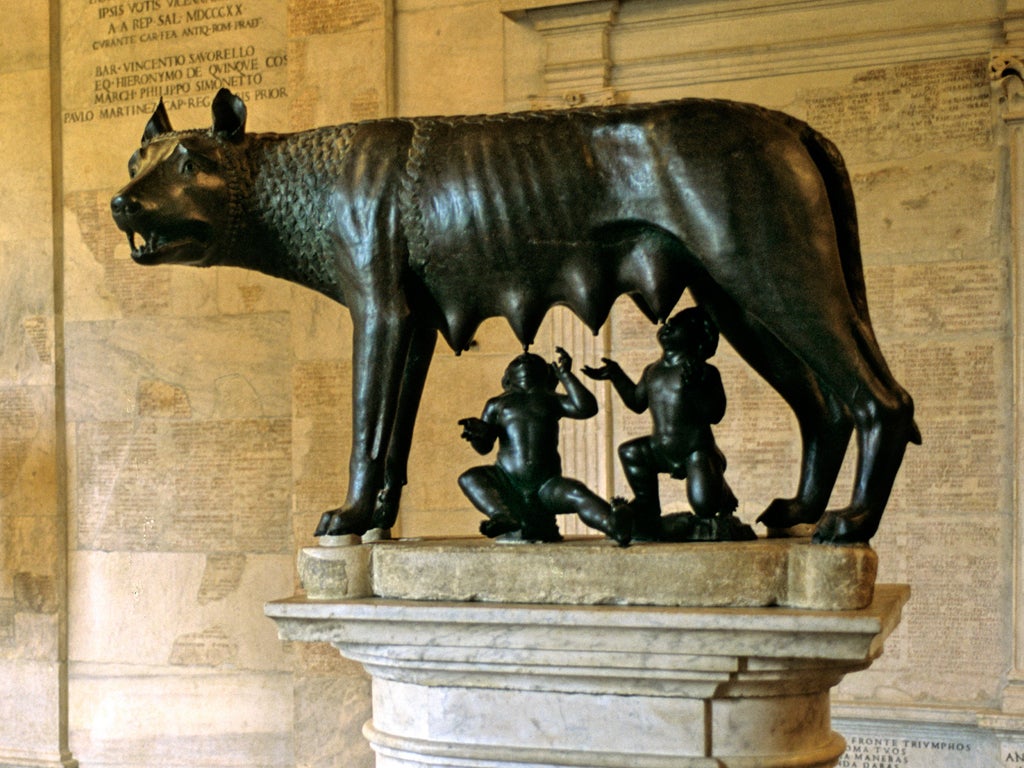Ancient symbol of Rome – or a Middle Ages knock-off?
First Germans intervened in Italy's politics. Now they're downgrading a cultural icon

Your support helps us to tell the story
From reproductive rights to climate change to Big Tech, The Independent is on the ground when the story is developing. Whether it's investigating the financials of Elon Musk's pro-Trump PAC or producing our latest documentary, 'The A Word', which shines a light on the American women fighting for reproductive rights, we know how important it is to parse out the facts from the messaging.
At such a critical moment in US history, we need reporters on the ground. Your donation allows us to keep sending journalists to speak to both sides of the story.
The Independent is trusted by Americans across the entire political spectrum. And unlike many other quality news outlets, we choose not to lock Americans out of our reporting and analysis with paywalls. We believe quality journalism should be available to everyone, paid for by those who can afford it.
Your support makes all the difference.The most celebrated and supposedly one of the oldest symbols of the Eternal City may not be a product of the ancient world after all.
The Capitoline Museums' statue of the legendary she-wolf, which was said to have nourished Rome's founders, Romulus and Remus on the banks of the River Tiber, was not crafted by the city's ancestors, the Etruscans, but was made at least 1,000 years later in the Middle Ages, some experts now insist.
According to the museum's website, the bronze she-wolf was made in the 5th or 6th century BC, with the figures of the twin brothers added separately in the early 1500s. But studies of the statue's construction suggest otherwise. And if seeing the iconic work's provenance thrown into doubt weren't bad enough, the museum's authorities have, with red faces, had to emend the statue's description after complaints by German newspapers.
Just days after Rome had, in the eyes of some, had the Eurocrat premier Mario Monti foisted on it by an Angela Merkel-led EU cabal, the Germans have been dispensing diktats regarding Italy's celebrated antiquities. The German daily Der Spiegel led the way in reviving question marks about the statue's origins – forcing the museum to issue a statement this week promising to acknowledge the alternative "hypothesis" of the statue's provenance alongside the usual explanation.
Traditionally, the 30in-high she-wolf, which is the centrepiece of an eponymous room in the museum, was said to be either the product of an Etruscan workshop in the 5th century BC or even the masterpiece of the 6th century BC Etruscan sculptor Vulca of Veii – not far off Romulus's mythical foundation of the city in 753 BC.
The original – and romantic – version of the statue's origins was undoubtedly central to the work's appeal. Benito Mussolini, Italy's Fascist dictator who fancied himself the founder of the New Rome, was in the habit of sending out copies of the bronze as a gift.
In reality, though, the cat was out of the bag several years ago, when in 2006 La Repubblica published the doubts of a leading expert regarding the statue's real age.
Adriano La Regina, professor of Etruscology at Rome's La Sapienza University, who for decades headed the national archaeological office for Rome, claimed that "unarguable evidence tells us that the she-wolf is not a product of the ancient world".
Another expert, the restoration specialist Anna Maria Carruba, said the she-wolf could not have been made in ancient times because it was cast in one piece – a forging technique that was invented by mediaeval sculptors, she noted.
Professor La Regina has even suggested that the Capitoline Museums were reluctant to release test results indicating the bronze's mediaeval origins. "The new information about the epoch of the Capitoline bronze has been held back," he said.
Perhaps the Capitoline Museums' authorities can claim that Italy's notorious bureaucracy was to blame for its failure to inform visitors of the insights five years after the new information surfaced.
But in Mario Monti's new Italy, red tape and inefficiency are due to be replaced by something like teutonic efficiency, though fans of things Italian will be hoping there won't be too much of it.
Join our commenting forum
Join thought-provoking conversations, follow other Independent readers and see their replies
Comments